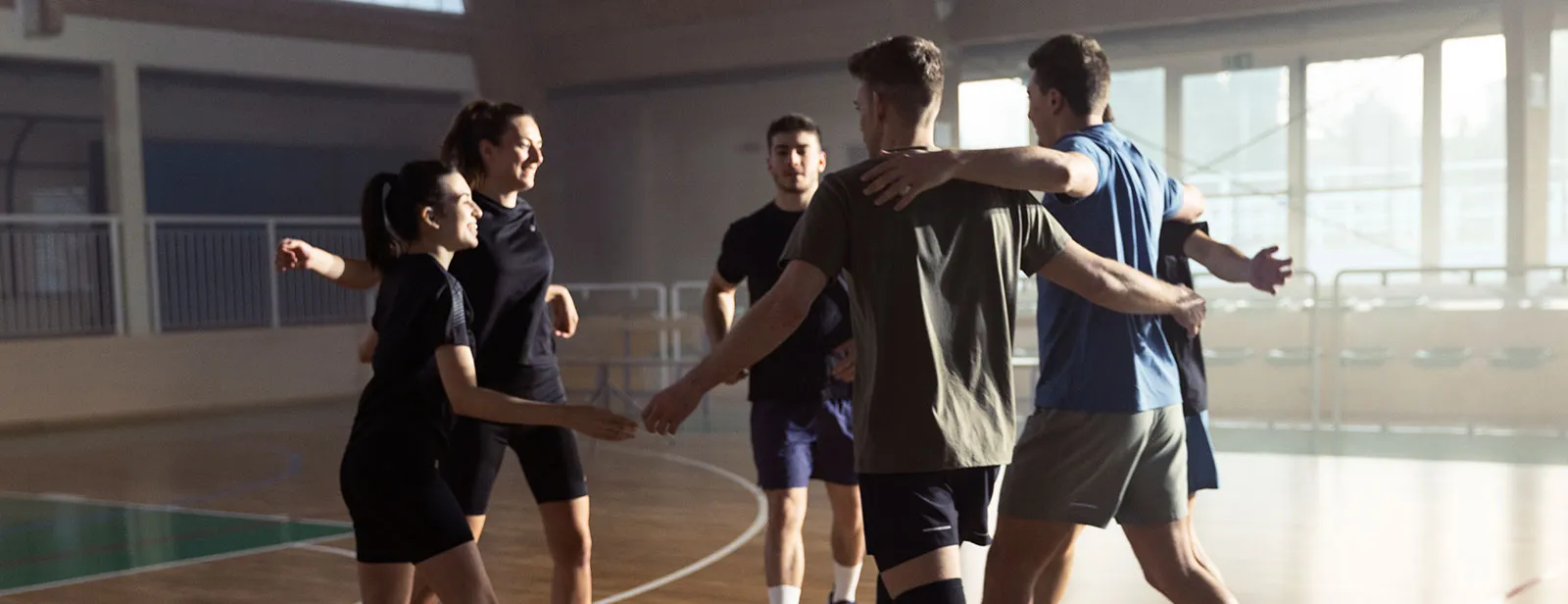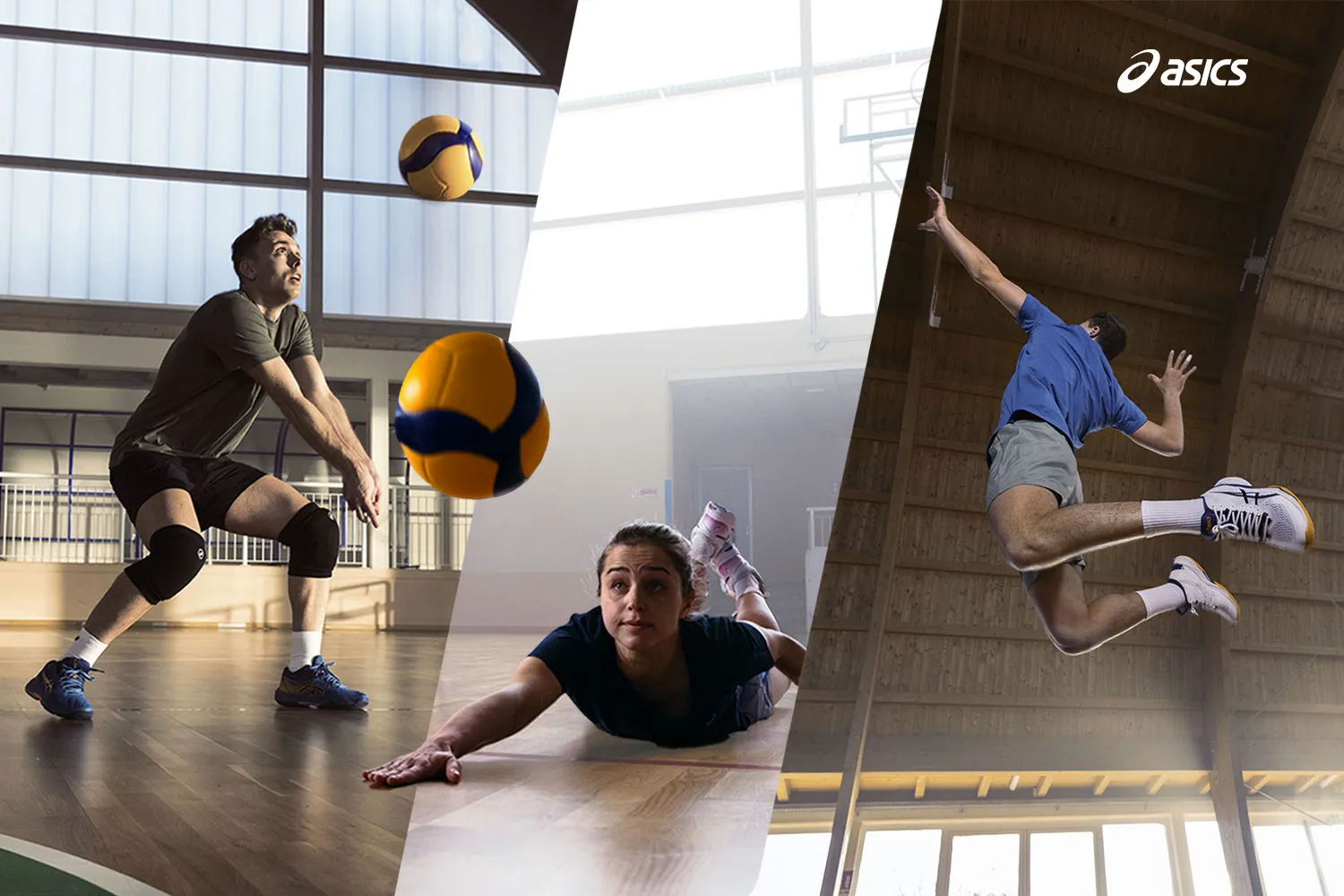
Volleyball Training Tips
December 29, 2022
Small changes and improvements can have a big difference on your overall volleyball game.
Training Tips to Help Improve Your Volleyball Game
By incorporating the five volleyball tips and tricks below into your gameplay, you can gain a deeper understanding of how volleyball works and learn the skills and strategies it takes to become a better player.
5 easy training tips and tricks for volleyball players
Unsure where to begin with your volleyball training? Use the following tips to help improve your gameplay and feel more confident on the court:
1. Work on the 6 main skills in volleyball

Serving, passing, setting, blocking, digging, and hitting are the first skills volleyball players should focus on. Improving on the fundamentals can benefit your overall game. For each skill, there are simple drills and tips to help you play up to your full potential.
Simple drills for the 6 main volleyball skills
With each of the following skills, there are multiple drills you can add to your practice to enhance your ability as a player overall. While you may already practice some of the drills mentioned, consider adding drills for each skill beyond your current regimen. If you want to learn how to play better volleyball, consider using some of the following drills in your practice:
- Serving. Whether you serve overhand or underhand, drills such as target practice can help you develop your technique. To perform the target practice drill, set up six targets on the opposite side of the court, then choose a target to try and hit with your serve. Repeat until you’re able to hit each target.
- Passing. Drills like pipeline passing can help improve your passing. To perform this drill, start by standing 10 feet apart away from a partner. Pass the ball to your partner, shuffle to your right, then shuffle back to your original position before your pass is returned. After 10 passes, begin shuffling to your left side and complete 10 additional passes.
- Setting. Have a seat and long distance sets are two effective drills for improving your setting skills. To perform the have a seat drill, sit in a cross-legged position 10 feet from a partner and set the ball back and forth. For long distance sets, stand 20 feet from your partner and set the ball back and forth.
- Blocking. To practice blocking, you can incorporate drills such as mirror blocking into your training routine. To perform the mirror blocking drill, stand on the opposite side of the net as your partner and have them perform a series of blocking movements. Mirror each of the movements your partner makes, then switch roles.
- Digging. You can work on improving your digging technique by practicing simple drills such as the wall digging drill. The wall digging drill is performed by throwing the ball against a wall, then digging the ball once it bounces back. The harder and faster you throw the ball, the more difficult the exercise becomes.
- Hitting. To help improve your hitting mechanics, try practicing drills such as hitting from the box. To perform this drill, place a box directly in front of the net and either toss balls to yourself or have a partner toss you balls. As you hit each ball, focus on your form and technique.
2. Increase your flexibility
Flexibility and mobility are key to becoming a better volleyball player. Regardless of your style of play, stretching after every practice can help keep your muscles healthy and relaxed. There are three types of stretches you should add to your routine:
- Static stretching. Static stretches can help increase your flexibility and range of motion. With these stretches, your aim should be to hold a stretch for about half a minute once you feel a stretch. Stretches like the bicep stretches, seated butterflies, and seated toe touches are all common static stretches.
- Dynamic stretching. Performed in motion, dynamic stretches help warm your body up for motion like playing volleyball. This means that they’re best used before practicing. Examples of dynamic stretches include lunges, leg pendulums and arm swings.
- Ballistic stretching. Like dynamic stretching, ballistic stretching relies on movement. However, the key difference is the use of light bouncing and jerking motions that push the stretch beyond a dynamic stretch. Bouncing toe touches, standing lunges and leg swings are all good ballistic stretches for volleyball.
3. Practice your defense
Practicing your defense is as important as practicing skills that help your attack. There are several strategies to help improve your defensive play:
- Always stay in position and on your toes. When the ball is on your opponents’ side, it’s important to remain ready and in position. This will help you avoid getting caught off guard or having a slower reaction time, plus you’ll also avoid needing to pivot from your ankles to your toes to return the ball.
- Focus on your hand positioning. Depending on your preferred dig strategy, you should raise or lower your hand so that they are closer to where they’ll be when you’re about to return an opponent’s attack.
- Think about how you watch the ball. Good defense in volleyball is all about reading your opponent. Look at which blocker they’re about to attack, and most importantly, watch that blocker. Your next defensive move is based on the actions of that blocker, so it’s important to watch them to plan your defense.
4. Improve your conditioning
Beyond playing the sport itself, there are several other ways that you can condition your body for volleyball. Here are some examples of different types of training that can benefit your volleyball game:
- Speed training. Sprints and box jumps are great ways to practice speed. Interval training focuses on sprint speed while building the endurance needed for longer matches.
- Jump training. Exercises like box jumps and lateral skating jumps can help strengthen the quick-release muscles that allow for higher and faster jumps. This is useful for improving volleyball skills like jump serves, blocking and spiking.
- Strength training. While most players understand or even practice speed training, strength training is less commonly practiced. Deadlifts, squats, and overhead presses can strengthen the muscles that you use for nearly every volleyball skill.
5. Perform at-home volleyball drills
Strength and conditioning exercises are important, but your training shouldn’t stop there. The drills below can help you convert your workouts into volleyball skills.
Easy volleyball drills to do at home
If you want to actively improve your game, there are many drills you can do during your off time. As long as you have access to a ball at home, you can practice these drills with no additional gear.
- Single arm passing. With this drill, you want to reach out in front of you with both arms shoulder width apart and both fists clenched upwards. You want to move both hands up and down to bump the ball from arm to arm.
- Single arm setting. Start out by standing about one arm’s length away from a wall. While facing that wall, raise your hand with a ball above your head and practice setting the ball towards the wall with one hand. Set the ball as the wall returns the ball to your hand again and again.
- Passing with yourself. With your arms out, elbows locked, wrists together, and hands folded as if you are about to pass, hit the ball into the air using your arms. Squat down right before the ball is nearing your hands. Repeat the same motion to cycle the ball between the air and your arms. Make sure your arms form an even surface so that the ball won’t be hit diagonally.
- Serve standing. Step forward with your bent arm raised and elbow slightly behind your head as you would for an overhead serve. As you step forward, throw the ball in the air with your opposite hand and perform a float serve.
Set yourself up for success with quality volleyball gear
The importance of high-quality volleyball gear shouldn’t be overlooked. If you have uncomfortable shoes or gear, it may detract from your game and make you feel less confident on the court. If you want to make sure your gear isn’t holding you back, check out ASICS’ wide selection of indoor sport shoes, apparel and accessories.
Please note: This information does not contain or constitute medical advice or a medical opinion, and it is provided for informational purposes only. You should always consult a qualified and licensed medical professional prior to beginning or modifying any diet or exercise program.



